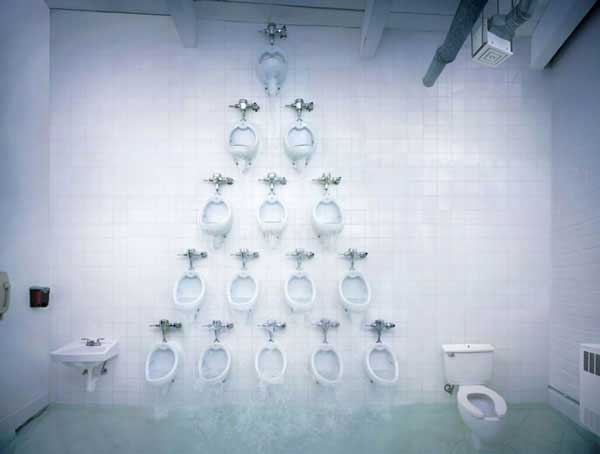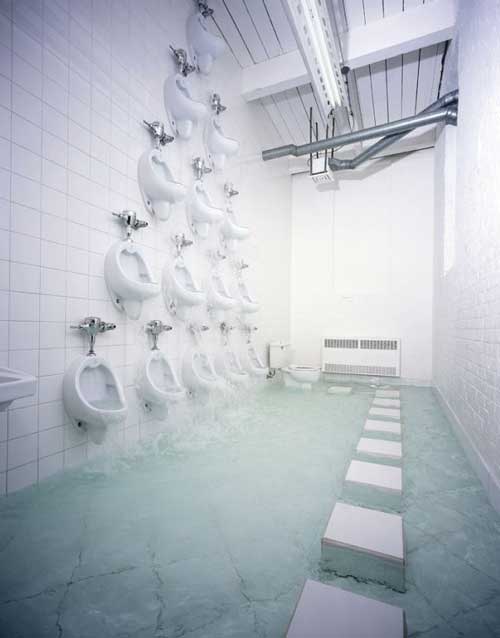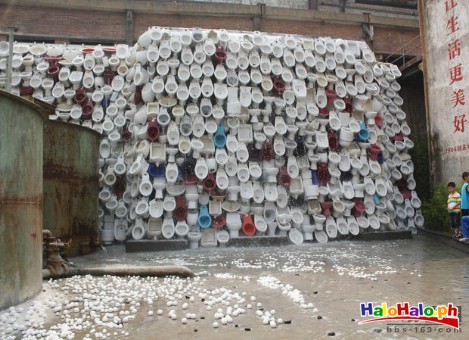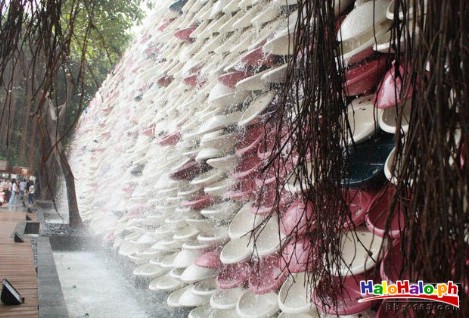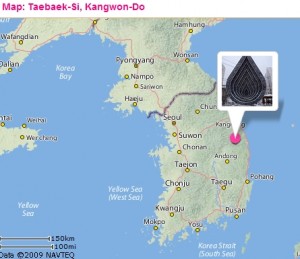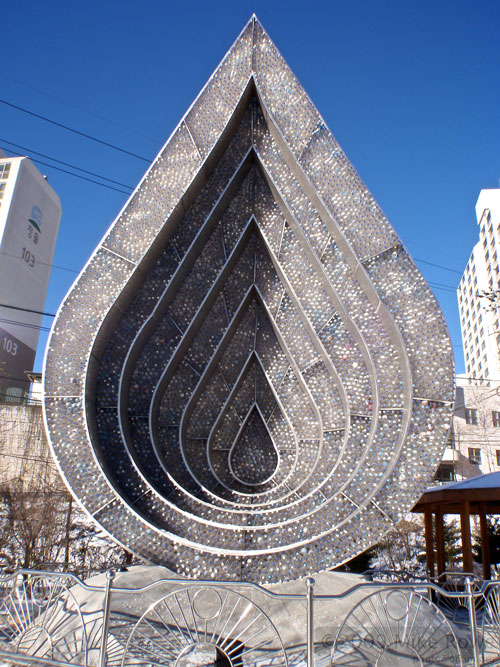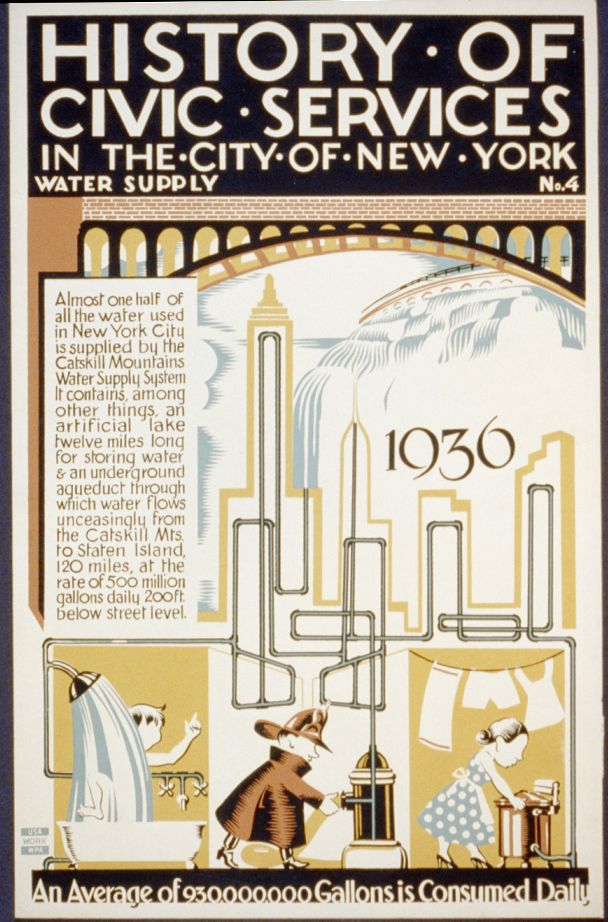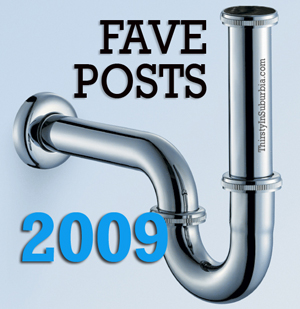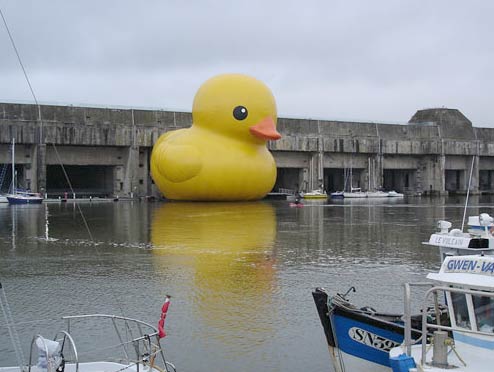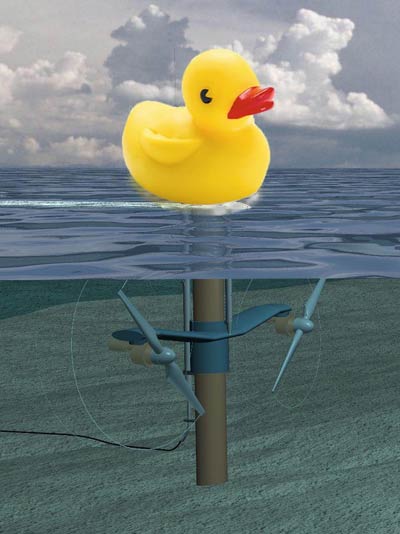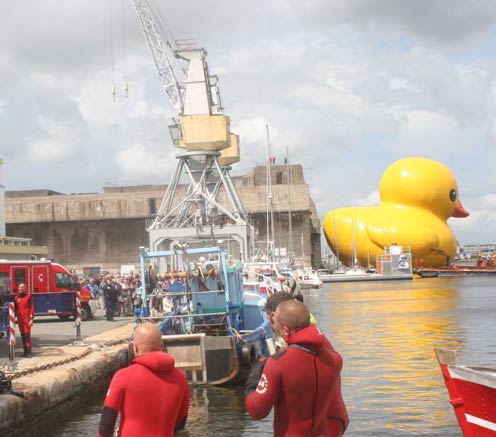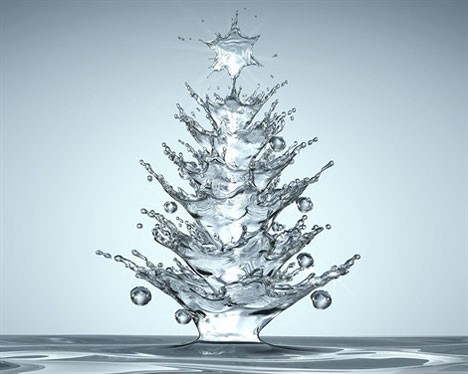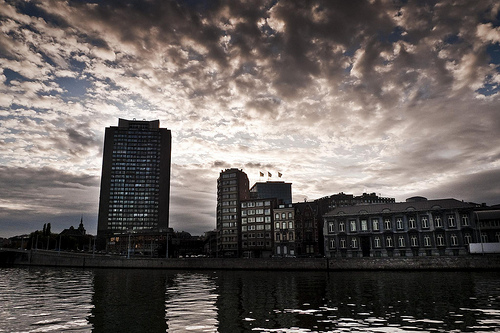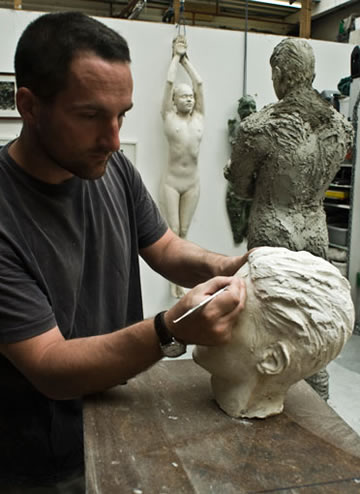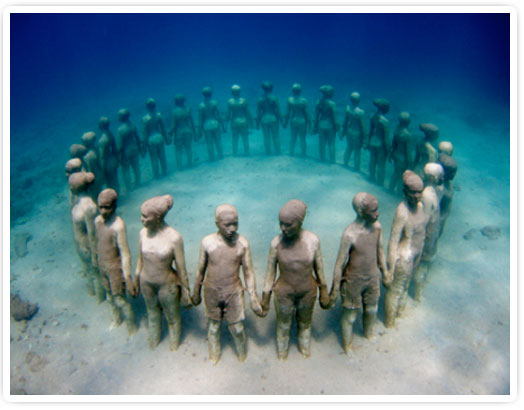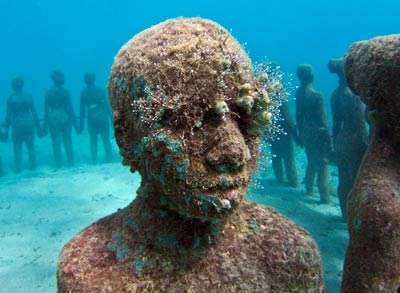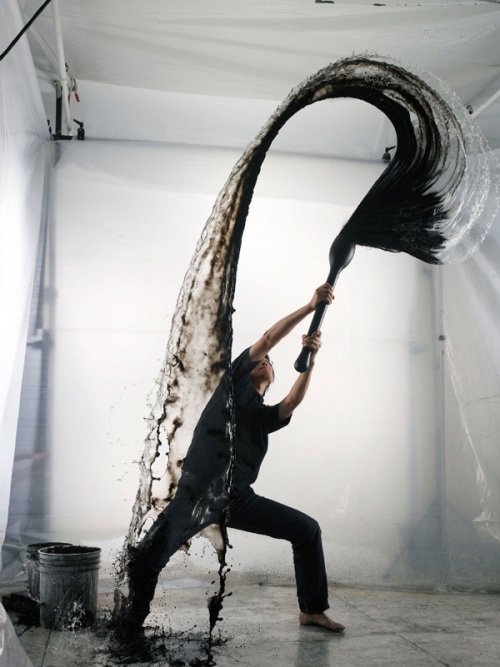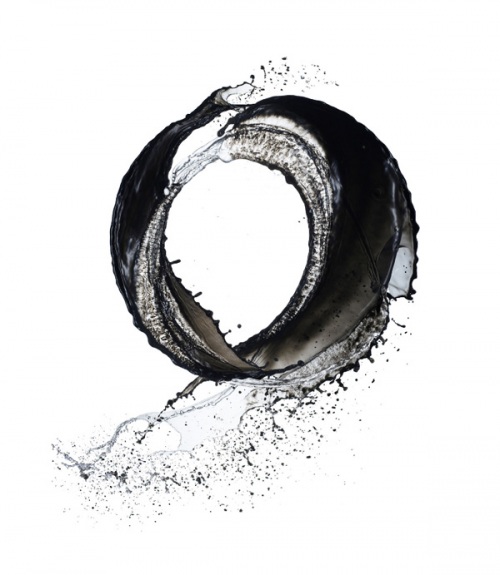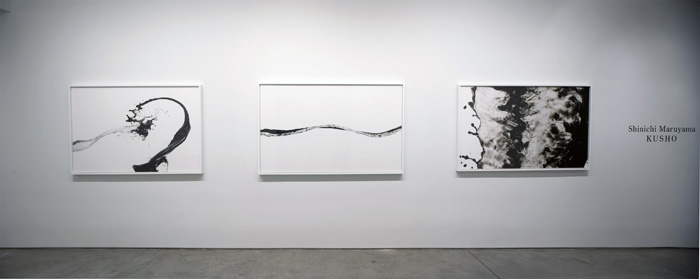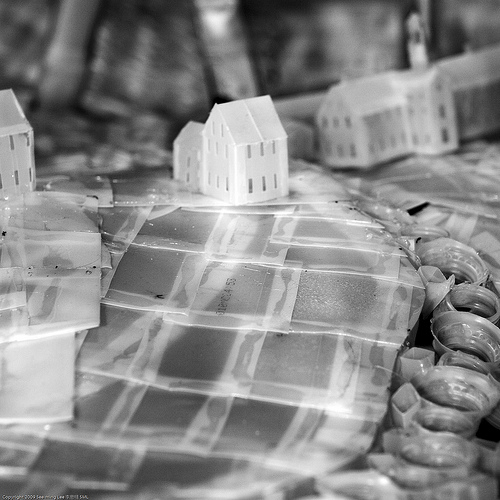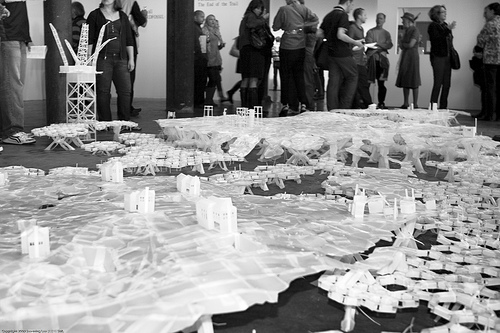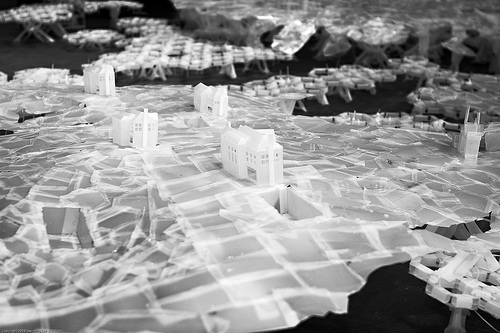Art Lovers: Urine for An Unusual Sight
Art you can use…if you dare! The most interesting thing about this 2005 installation is that it was a fully functional facility, “open to both sexes.” Thanks to Brian Banks for alerting us to American Standard by Vancouver, Canada artist Reece Terris. (Matchmaking opportunity! Reece, there may be a perfect-fit project waiting for you in Toronto!)
From the artist’s website www.reeceterris.com,
American Standard is an installation that featured fifteen functional urinals arranged in a pyramid formation on the wall of the men’s washroom in the Alexander Centre studio at Simon Fraser University. Transforming the facility into a public indoor fountain, water overflowed from the uppermost urinal and splashed its way down through the formation creating a deluge of water flooding the sunken floor. Visitors enter the space via tiled stepping stones, providing access directly to the sink and preexisting toilet, leaving the facility fully functional and open to both sexes.
At the same page, don’t miss the embedded video which includes the installation in action; this does the work far better justice than these still photos.)

